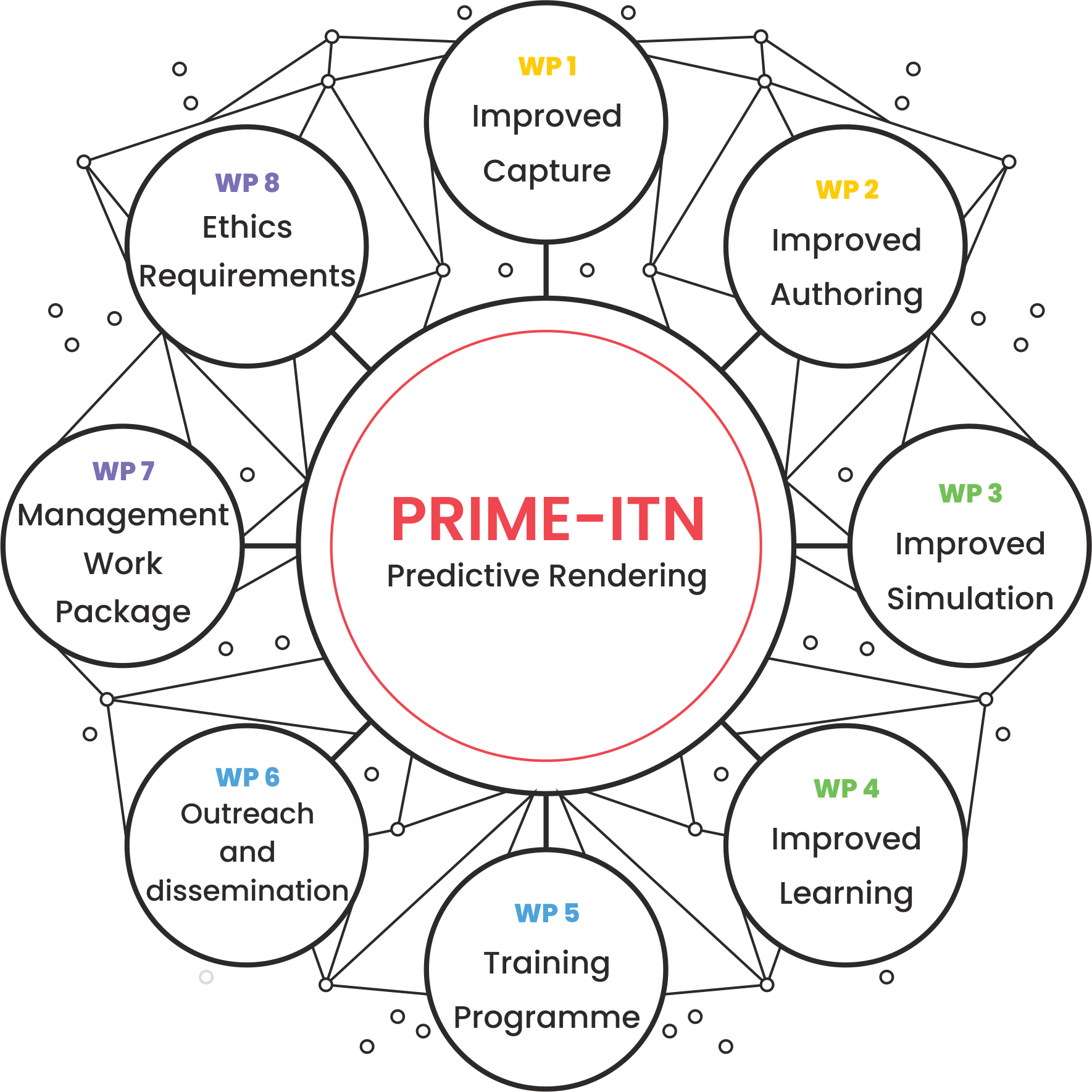Our Structure
Our research methodology is tightly linked to our training objectives, and our goal is to build an environment in which all participating researchers would naturally contribute to these training objectives. The four research objectives, Improved Capture, Authoring, Simulation, and Learning, correspond to four science work packages (WP1-4). Each ESR’s individual project is tied to one or more of these four objectives.

“Cras tristique turpis justo, eu consequat sem adipiscing ut. Donec posuere bibendum metus.”
Project research objectives and training goals will also be realized using an additional four work packages (WPs), as described below:
WP1 Improved Capture
ESR08: Dynamic geometry capture and generative modeling of 3D geometry
ESR11: Sparse sub-space representations
ESR12: Compressed sensing for material capture
ESR15: Acquisition of wave-optical effects in material appearance
ESR02: Efficient fluorescence capture
WP2 Improved Authoring
ESR02: Natural Materials, with particular emphasis on wood appearance
ESR10: Material appearance specification and rendering using the BSSRDF
ESR14: Perceptually-Driven Intuitive Editing of Complex Data-Driven Appearance
WP3 Improved Simulation
ESR06: Rendering outside the visible spectrum
ESR13: Efficient Rendering of Volumetric Structured Appearances
ESR01: Fluorescence rendering
ESR01: Using optical brighteners for contrast enhancement in 3D printing
ESR03: Advanced Light Transport Simulation for Virtual Reality
ESR04: Developing Robust Error Bounds for Light Transport Algorithms
WP4 Improved Learning
ESR07: Predicting weathering / aged appearance
ESR09: Modelling and predictive rendering of particulate materials
ESR05: Synthetic training data for vision and sensing
ESR08: GAN-based furniture placement in synthesized indoor scenes
ESR15: Learning based wave optical appearance estimation and rendering
WP5 Training programme
The overall training goal of the PRIME network is to provide a generation of young scientists with a broad and inherently inter-sectoral training in predictive rendering technologies.
Our four training objectives are:
- Provide in-depth training in multiple research methodologies by leading experts in the field
- Promote the ability for inter-sectoral collaboration
- Provide the skills for the development of new innovative research results and to provide hands-on experience in their commercial exploitation
- Share expertise and technology through international mobility of ESRs and senior researchers
WP6 Outreach and dissemination
Dissemination of the research results through: top-tier scientific publications; benchmark suites; participation and presentation at academic and industry oriented workshops; commercial exploitation; academic and industrial secondments.
Communication to a broader audience via different means:science popularisation events; popularscience media outlets;
national-level science meets; press releases; website updates; social media
WP7 Management Work Package
- setting up of the management and administrative structure of the project
- establishment of the Supervisory Board and other network structures
- conclusion of the Consortium Agreement
- day-to-day management of the project, communication between beneficiaries and partners
- preparation and submission of reports and deliverables
WP8 Ethics requirements
This work package sets out the ‘ethics requirements’ that the project must comply with.
